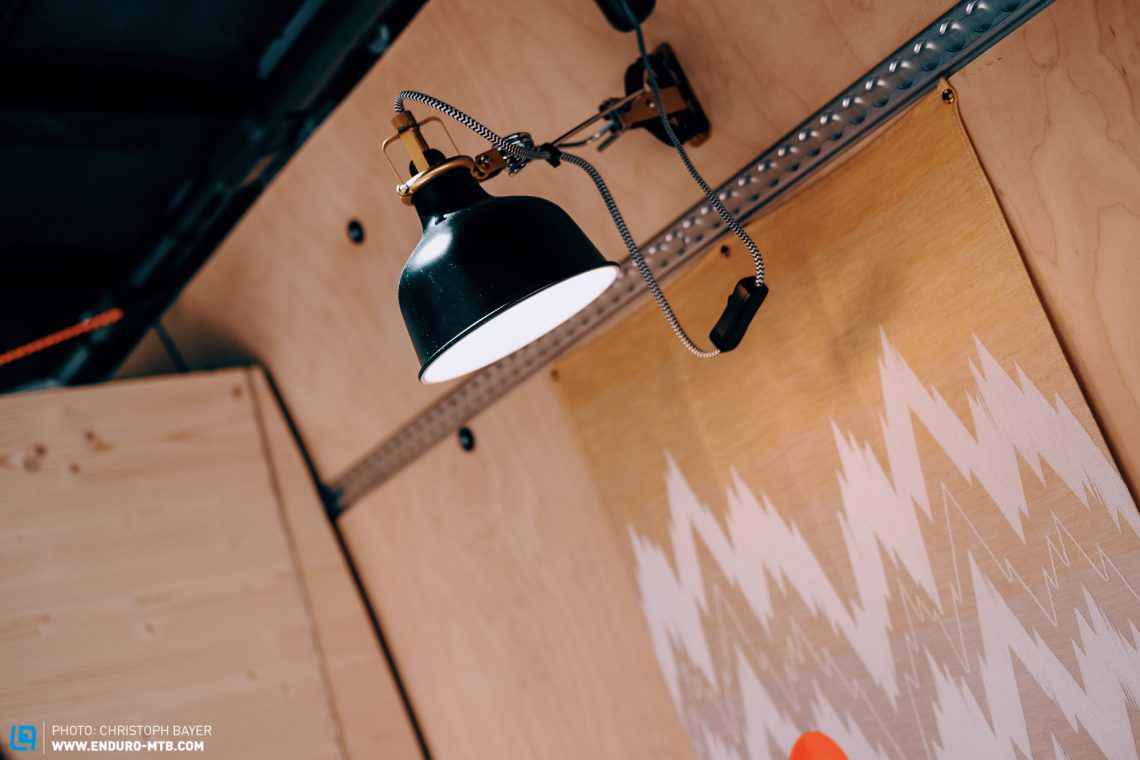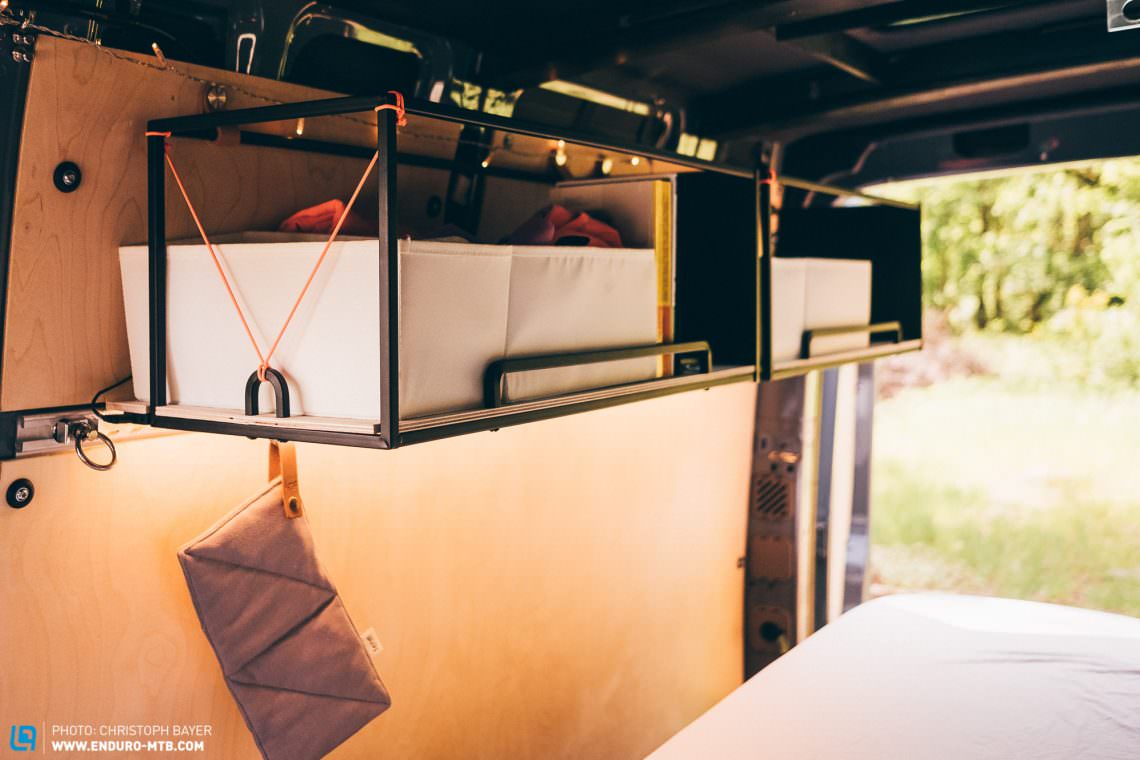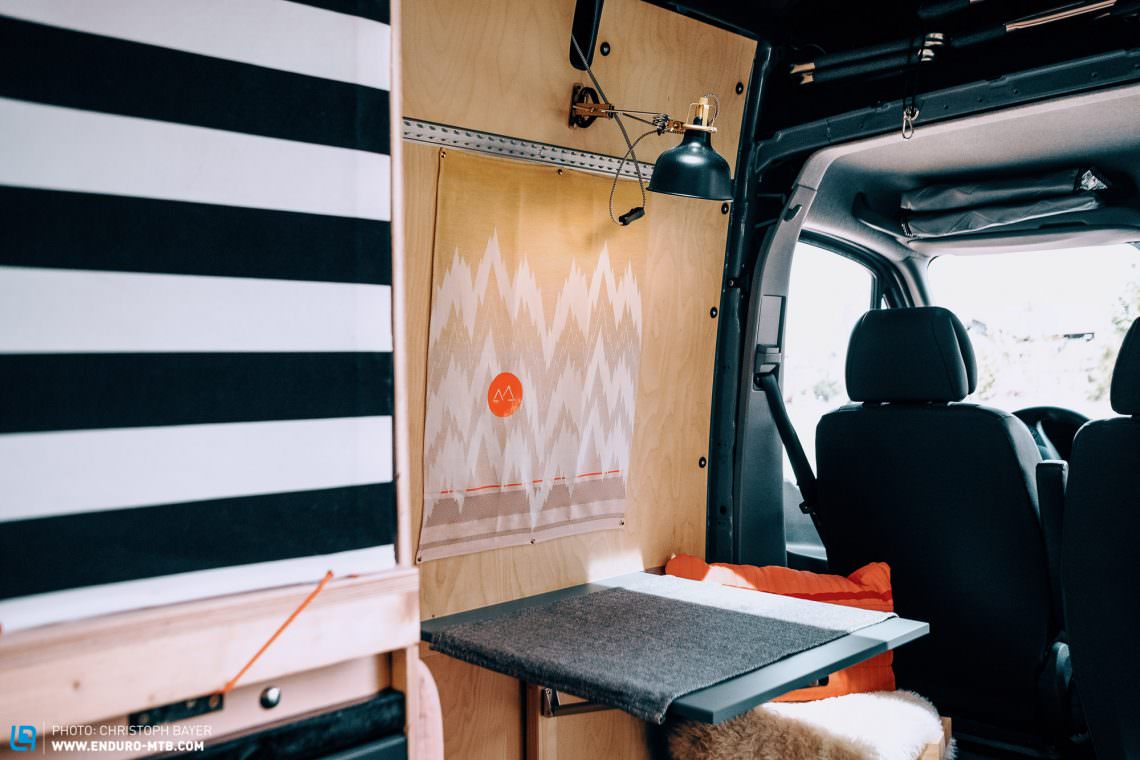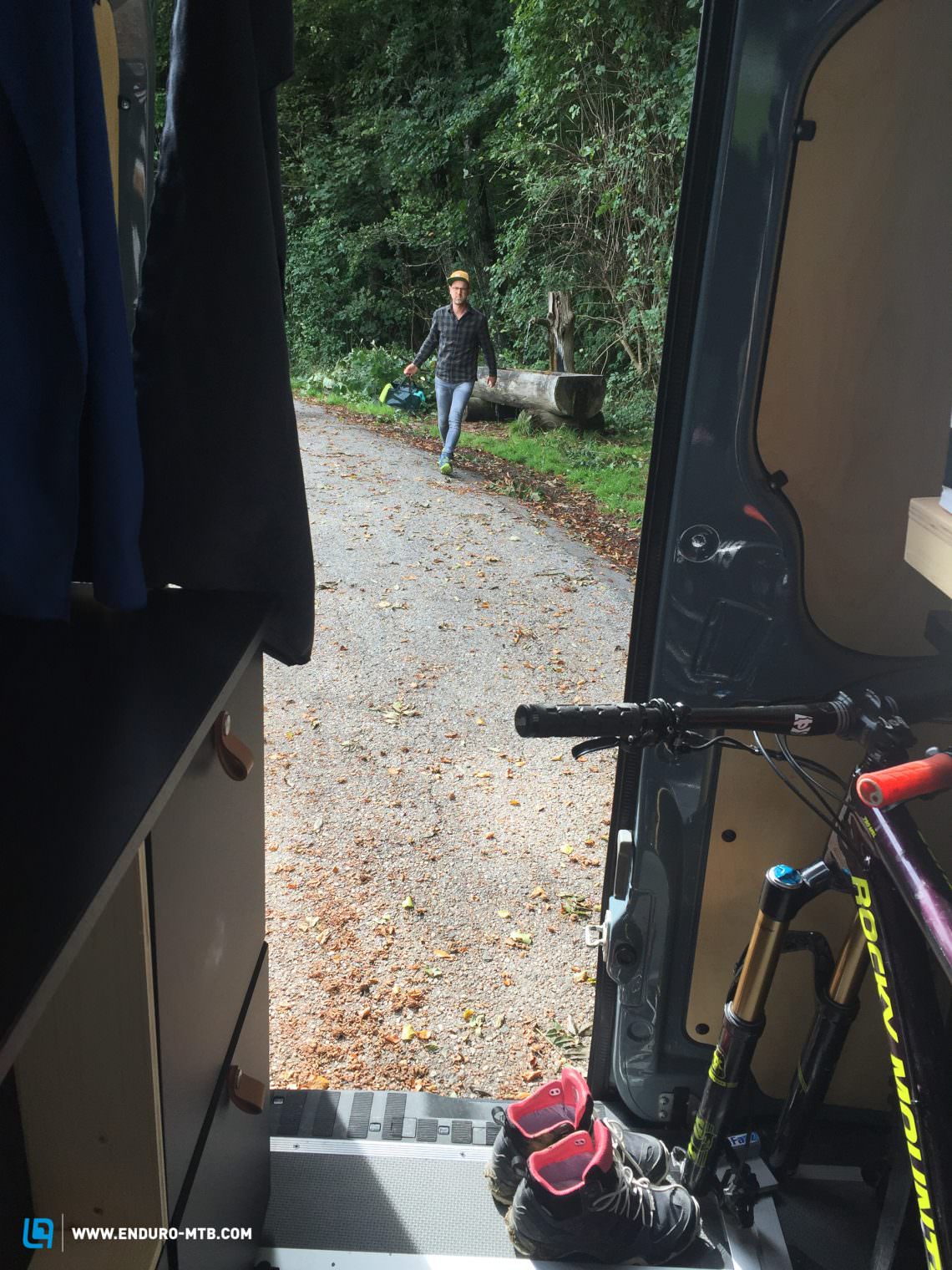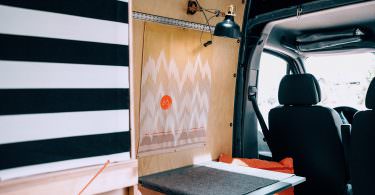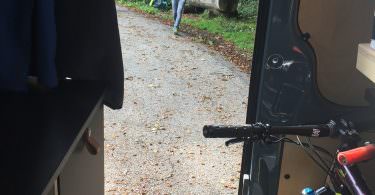There are more than 5.1 million hits for #vanlife on Instagram. Social media is brimming with self-confessed adventurers that traverse the world in their vans. Our friends Magdalena and Paul are authentic embodiments of this lifestyle, so we sat down with them to get the full scoop – what exactly is the fascination with #vanlife?
You might ask yourself who exactly these two people stood in front of a grey Mercedes Sprinter are. It’s clear that they are mountain bikers, but Magdalena and Paul aren’t pros. Hell, they aren’t even sponsored and they’re far from being classed as influencers. They’ve got fairly standard jobs: Paul works as a system administrator and Magdalena is a designer for a leading car manufacturer, developing concepts for vehicle interiors. We first met the couple at Trail Centre Rabenberg and were immediately hooked by their outlook on life. What makes the pair so interesting is that they don’t just love to set goals, but they go about realising them with real steeze. Correspondingly, their ambitions haven’t stopped at transforming the Sprinter into a lust-worthy adventuremobile, Paul has also founded a mountain bike school called Trailment in Germany’s Chiemgau.
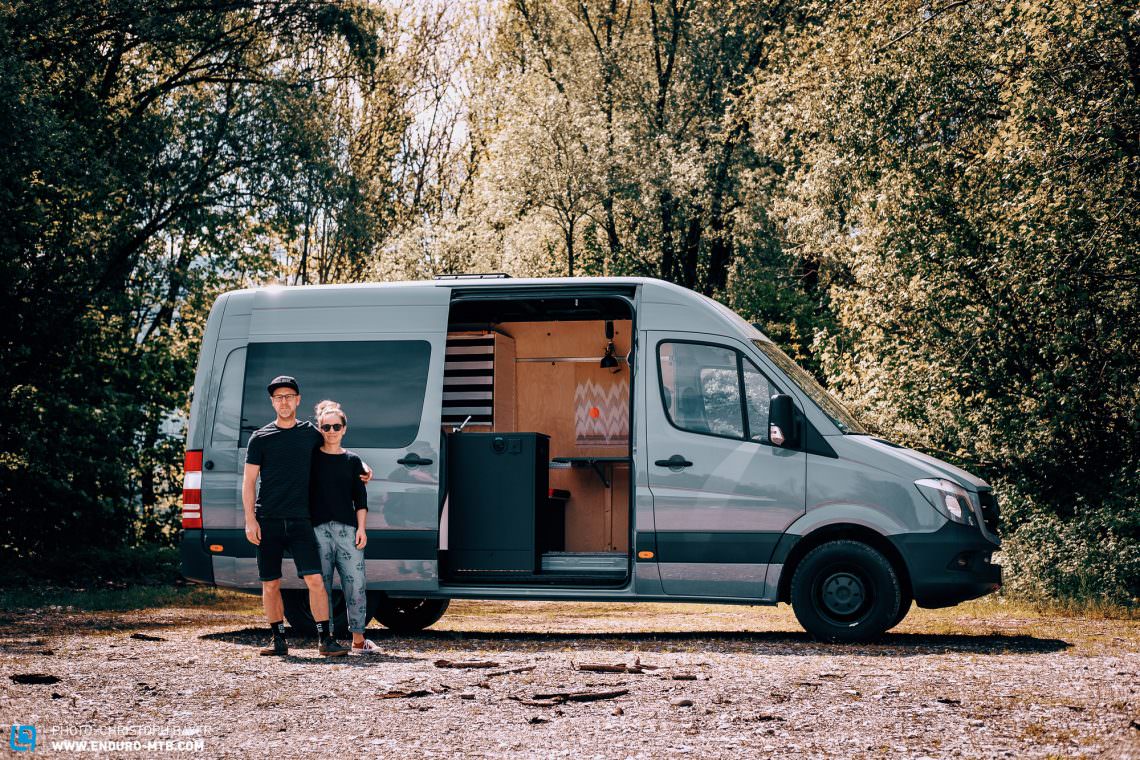
Why it’s worth going by van
“Our brains function differently when we’re on the road,” says Magdalena, reflecting on why she and Paul choose to travel by van. She weighs up her answers to our probing carefully, before explaining that the blur of the landscape rushing by, the constant change between greens, blues and greys, as well as the glimpses into so many lives, essentially kindle their creativity and open up their horizons. It’s while they’re perched in the front seats of the van that the couple dive into the sorts of conversations that would usually be reserved for the sofa. Not only are they better listeners while in the van, but they also both admit to feeling “freer” and “less restricted.” But the holiday doesn’t start when they reach a fancy hotel; the adventure begins as soon as the ignition is switched on.

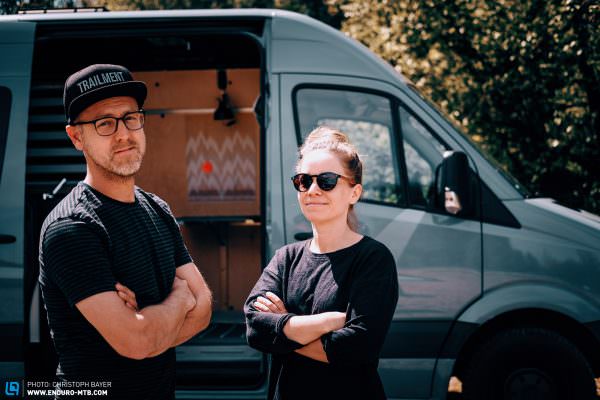

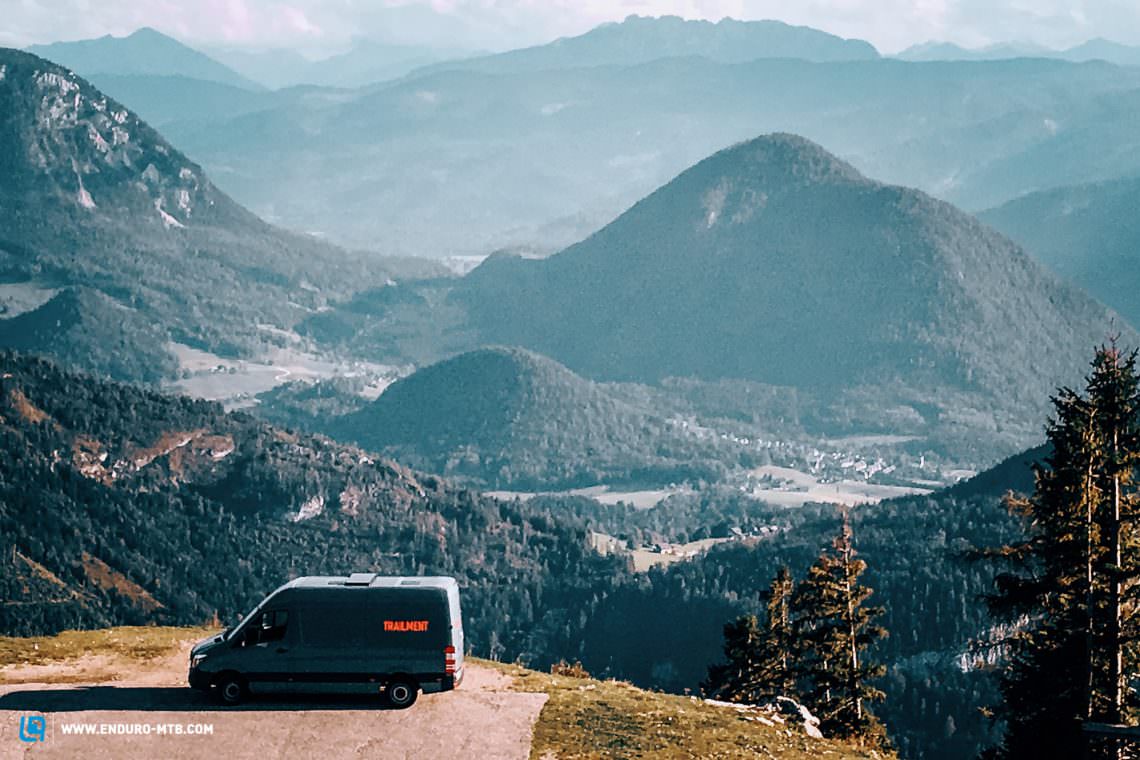
With their van, they’ve got total control over their plans and aren’t held hostage to reservations or dates. Knowing that they can change their route at a moment’s notice instils a sense of complete freedom, even if they are only away for two weeks. If rain is forecast in Slovenia, why not stop in Italy? It’s fair to say that the overused cliché that “Life is about the journey, not the destination” actually applies here.
Diversions welcome
Digging a map out from the depths of the footwell may be a thing of the past when it comes to navigating across Europe, but if it’s adventure you’re looking for then you shouldn’t overlook the basics. These days, we all want to consume the ultimate experience, but forget that it won’t always be straightforward – and nor should it be. It’s like those tough climbs that you decide to do anyway, even without a shuttle or cable car. There’s a reward at the top, right? The sense of freedom isn’t just a product of the epic views, but a result of the effort it took to reach them. This is exactly why Magdalena and Paul don’t rely on a satnav. Instead of letting a little screen dictate their route, their decisions are based on the landscape. Left or right? A phone might answer in a fraction of a second, but a glance out of the window might reveal a different option. “How important is it that we actually reach a destination?” Magdalena gestures around her. “Instead of focusing on where to end up, I prefer to keep the options open. We might take a wrong turn from time to time, but we always stumble across something truly amazing.”

Life used to be about status, but now it’s about experiences and time
Magdalena’s previous existence is one that many people might have aspired to emulate. Back when she worked full time, she was in the top tier of her frequent flyer mile programme. She lived a jet set life, was always the first to board the plane and drove more fast cars than she can count. But did it make her happy? “The problem with the idea of status is that you end up spending so much time trying to maintain it, or build it up even higher,” sighs Magdalena. “There’s more stress than enjoyment.” She recounts the moment when she realised that she’d had enough – a decision prompted by three weeks spent on a mountainside. She reduced her working hours and moved out of the city. Instead of air miles, she wanted experiences. “We’re in charge of the direction of our lives,” she says matter-of-factly, “but to recognise this, you need to regularly check in with yourself, and determine what you’re striving for and where you want to end up. Then it’s about getting off the sofa and going for it.”
But where does a van fit into the situation?
If we’re being honest, there’s no concrete reason to justify the additional stress of sourcing a van, transforming the interior, and getting it road ready. Just the thought of installing a roof window is enough for many of us break out in a cold sweat. From the formation of the idea to the rapid fuel consumption when it’s up and running, you have to invest a lot of time and money. Ready made campers are obviously an easier solution, but this wasn’t an option for Magdalena and Paul. While most campers are constructed to provide the ultimate in comfort, they aren’t usually tuned to the needs of mountain bikers. And, as the pair rightly say, where’s the challenge with a pre-made package? They threw themselves into the project like true athletes, wanting to push their limits. In retrospect, they compare the process to riding down a new trail. You’re able to gauge your ability, but still want to push yourself further and have fun doing so. It’s a calculated risk. Today they don’t just see the van as their second home, but as an expression of their identity.

What do you need to consider for your van?
There are three crucial elements you’ll need for your prospective #vanlife project: time, a certain level of DIY ability, and a vision of what you actually want to build. Your initial purchase is vital. Before even starting their van-hunt, Magdalena and Paul rented a camper. This experience helped them write a list of wants and needs, which they then prioritised: something discreet and self-sufficient, with internal storage for the bikes, but without the need for a camping window, external plug sockets, or an awning. They eventually landed on a Mercedes Sprinter with a powerful motor and few kilometres on the clock and some fortunate extras like an independent vehicle heater, two roof windows and airline rails at the rear where they could mount interior fittings.
Van stats
- Mercedes Sprinter L2H2, from 2013, bought for € 15,000 (at 150,000 km)
- Conversion costs: approx. € 6,500
- Duration of the conversion (done part-time while working and riding) approx. 3 months
- Solar powered electricity for fridge, light and electric toothbrushes
- 2 water tanks with 32 L total capacity
- 4 bikes/3 seats/sleeps 2/no Instagram account
After the planning phase came the insulation and interior fittings. They were unanimous on two points: space to stand up, and space for the bikes. This inspired their choice of a folding bed propped up on a modular sideboard from IKEA with ample storage space for a water tank, sink and outdoor shower. None of their decisions were reached overnight, and it was all “inspired by more than just a few YouTube videos.” Despite all the planning, the couple’s recipe for success is simple: “You just have to do it.” Their enthusiasm is infectious and the finished project clearly means a lot to them. No two DIY converted vans will ever look the same, but whether you go all-in for a slick travelmobile with a shower, or an austere sleeping space only option, the important thing is that it meets your needs.
On this note, we hope that this article provides the inspiration you need to go start your own #vanlife adventure. Click here for the breakdown of Magdalena and Paul’s project.
We’d love to see your current #vanlife project – unfinished, finished or out on an adventure! Shoot us an email: cbayer@enduro-mtb.com

By the way, our colleagues from DOWNTOWN magazine recently tested whether #vanlife also works without a car: #Vanlife on two wheels – A one night stand with a Persian rug and a cargo bike

Did you enjoy this article? If so, we would be stoked if you decide to support us with a monthly contribution. By becoming a supporter of ENDURO, you will help secure a sustainable future for high-quality mountain bike journalism. Click here to learn more.
Words: Photos: Christoph Bayer, Magdalena Schmid and Paul Blaschitzko





